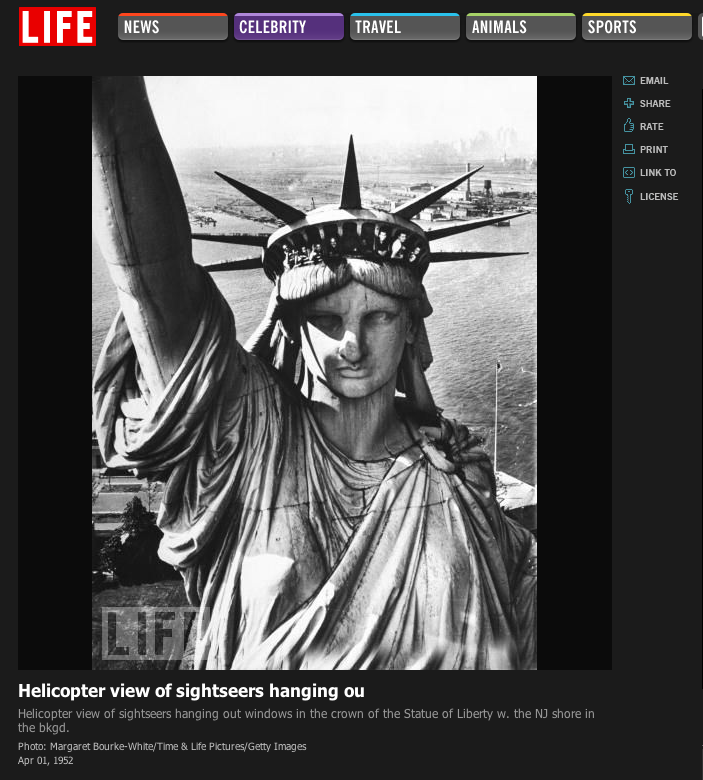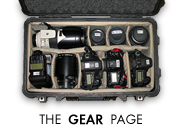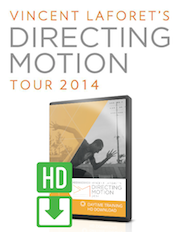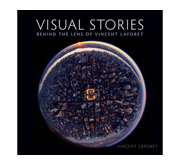Online = free?
 Today Life.com and Getty Images “joined forces to provide you instant access to millions of breathtaking photographs – for free.” … “When you find a photo you like, you’ll be able to share it, print it, and sometimes even buy it.”
Today Life.com and Getty Images “joined forces to provide you instant access to millions of breathtaking photographs – for free.” … “When you find a photo you like, you’ll be able to share it, print it, and sometimes even buy it.”
I was a bit surprised at first when I heard of this – after all the Time Life collection has always been highly regarded in the photography world as one of the most important historical collections of the 20th Century.
I think that it’s great to allow people to enjoy it – to view the images that are all too often inaccessible or hidden away and decaying in dusty filing cabinets. Yet there always has been a certain cache to these photographs – in fact I bought a limited edition Margaret Bourke Wife print a few years ago as a gift for my wife. Now if anyone can legally print and share these images online for free – I do have to wonder: does this move lessen the inherent value of these images? (Granted making a low resolution print off of a web gallery doesn’t equate the value of a true black and white enlargement – but as we disseminate more an more of our content online (and no longer in “printed” form) I think the distinction between the two will become less relevant.) However, does making them available “for free” to some in effect “cheapen them.” Will people intrinsically value the use of an image a bit less now?
Perhaps what I find more interesting in all of this – is how Time and Getty Images are in effect encouraging the use of their images via e-mail, blogs, and social networking sites – without charging for that use (as long as it’s a “non-commercial” use.) I think it’s very important to really study that – as they are in effect setting a precedent that images shared via those avenues should not lead to any income for photographers or agencies. It stands to reason that LIFE.com and Getty Images stand to gain something from having thousands of eyeballs driven back to their sites – but haven’t the photographers lost yet another way of making potential income – even if these images were to be licensed for a nominal fee for personal use? Are blogs and social networking sites in effect being granted a de facto right to publish images for free from hereon out?
This does set off a bit of a red warning light with me if you will – as it reminds me of the time newspapers (The New York Times, Washington Post etc.) established the precedent that they would make all of their content available online for free. Now that both readers and advertisers are flocking away from printed media and that they are now going online – the newspapers are finding themselves in a bit of catch-22. Given the precedent, people scoff at the idea of paying an online subscription and they are expecting to continue to get the content for free. I often wonder why I still subscribe to the printed New York Times that is delivered to my door every morning – when I read 90% of the articles online for free.
What worries me specifically – is that I see blogs continuing to grow in popularity over time. Does giving them the right to use as many photographs “for free” not give them an inherent advantage over other traditional “commercial” publications? After all – I could go ahead and put together a very interesting blog post looking back at a historical event that included hundreds of some of the best historical images from the LIFE collection – and do so absolutely free and potentially drive thousands of readers to my blog. If Newsweek Magazine or Newsweek.com wanted to write the same article – it is unlikely that they would be able to afford licensing the hundreds of images from the LIFE collection – they might be able to afford just a few images to accompany an article. Which article are people going to be driven to read? I don’t think readers will ultimately care if they read an interesting article on Time.com or Joe.blogspot.com – readers will always flock to the best content – regardless of whether it is a “commercial” or non-commercial/personal web publication. Are blogs in effect being given an unfair advantage over the more traditional “commercial” publications?
So what happens when these blogs start to run banner ads (or any ads) on their pages? Are these still considered “non-commercial” publications? I know a blogger who makes more than $20,000 from banner ads each month – he doesn’t charge a subscription fee but does his banner income make him a “commercial publication?” My facebook pages have ads run on them (put up there by Facebook not me) – how does that fit into all of this? It seems that blogs and social networking sites are being given the green light to live in this “grey” area of being non-commercial and that they are being told that they should not expect to have to pay to license any images. I do think that LIFE.com and Getty Images should clearly specify in their terms of service that if any of the personal sites/ blogs / social networking sites run ANY advertising on their pages or make any profit whatsoever can no longer be considered “non-commercial.” If you derive a profit – you are a commercial entity – right? Well I don’t see such a distinction anywhere in their terms of service.
It’s tough to answer a lot of these questions definitively – but I hope it starts to bring up quite a few questions that we should all think about. Life.com and Getty Images – two very large entities in the photo world are already making these decisions for everyone it seems. We should definitely think about where this is all going in the long run. Why? Because as more and more of the content is migrating to the web – there seems to be a growing expectation that it will be available online “for free.” I think it’s pretty obvious that most of the world’s content is going to move online and away from traditional printed material over time. And sure, LIFE.com and Getty Images will continue to charge licensing fees to the traditional publications that are moving online. Does allowing certain “non-commercial” online blogs the right to publish images for free not give them a huge advantage over other traditional “commercial” publishers? I have to ask: if most of what is being put online is being put up there “for free” – how are the people responsible for producing that content supposed to make a living in the long run?













Quite simply, I fail to see how any page that runs advertisements can be considered non-commercial. Perhaps “not-commercial-enough-to-be-worth-bothering-with”, but certainly not “non-commerical”.
My bet is that stock is dead, now and for the foreseeable future. Whatever market there is, stock simply won’t be a significant part of it. Even without this Life/Getty collection, look at microstock: for web use istockphoto and others are dirt cheap. So as far as I’m concerned, stock is a writeoff now.
I don’t really see anything as viable other than commissioned or custom work. If anybody else sees viable areas, please do correct or elaborate upon my statements.
Vincent Laforet Reply:
March 31st, 2009 at 10:36 pm
@Neuffy, I absolutely agree: any blog/publication that is making any revenue out there should be considered “commercial.” But if you ask bloggers out there – I’ve found that many of them DO NOT consider themselves commercial – and many do not think that they should be paying for photographs/ or other content… their view is that they are simply “commenting” on those works – not publishing them… it’s a slippery slope to say the least…
Wolfgang Reply:
April 4th, 2009 at 9:18 am
@Neuffy, I have to strongly disagree on the stock part. Stock is everything, but not dead. It is changing indeed, but if you misinterprete this change as death, you’ll have a hard time in the photography business. Of course on first sight giving away your work for a bargain doesn’t make any sense, but this is just one side of the coin.
For instance, there are millions of tiny companies out there, who couldn’t afford 200 or even 2000 bucks for a stock image, so they did the photos themselves, and it looked terrible. Now every single one, of those tiny companies can afford multiple images in high quality (depending on their taste). In other words the market has been expanded massively.
Don’t forget that those who bought stock before microstock didn’t disappear. They are still here, and do you think all of them switched to microstock now? Nope, they didn’t, they just have another place to look for “the image they want to have”, and for those clients the price doesn’t matter most of the time, as long as they get the picture they need.
Also, don’t forget that microstock is a great starting point for newcomer photographers who need to learn and practice. I for myself am a bit frightened by how many real good photographers emerge from microstock, lots of them already contributing to getty images and other big stock-agencies, and myn of them even shooting assignments for bigger clients. I doubt they could have emerged that quick without microstock.
@Vincent: Basically in my point of view, the life.com launch is a milestone in the evolution of photography. The main point for me is, that it gets way easier for photographers to get their work seen globally (this is a process that has just started and is not finished at all).
But where you hit the nail on it’s head is that we need to find a new way to get paid for our work in these changed circumstances. I don’t really have an idea how this might look like, and it’s very good to start a discussion about it. I just wanted to point out the good sides of our businesses current change, which is dramatic indeed.
An interesting issue. I think we will have to question the “All free” myth as there will be serious consequences the access to information. For those interested, I wrote about where is going photojournalism (and journalism) in regard of the “All Free” culture and consequences.
Here’s an extract:
“The revolution of the Web conveyed a myth; the “all free”. But the “all free” business plan makes the survival of the media dependent only on publicity, which can cause ethical problems. The pressure of the advertisers ends up directing the contents of the news, which decreases the capacity of journalism. A democratic society rests mainly on the enlightened judgement of the population. This judgement depends on the access to the most honest possible information (objectivity is another myth).
But, the exemption from payment imposes limits which are incompatible with in-depth reports. The quality journalism requires time, reflexion, search, average techniques, displacements (it is necessary to be on the ground) and skills.”
And for complete text:
In French (my first language)
http://www.marcpauze.com/fr/La_Zone.html
In english (a translation attempt)
http://www.marcpauze.com/en/The_Zone.html
Food for thought.
“$20,000 from banner ads each month”, you say?! Who cares about the photos… Give us bloggers more details how to make that much coin from banner ads. Ka-ching!!! I’d be very happy with half as much.
😉
If we go further on your points on commercial versus non-commercial use, at what point does a blog, Getty, or Life need to get a model release? When is line between editorial and non-editorial use crossed?
On another note, it’s interesting that the site is branded as “Life” given that many recent photos are simply credited as “Getty Images.” I didn’t realize that the two were synonymous. Has Time Warner finally decided to give Getty the Life brand?
The big guys there – as history shows – most often know what they are doing. Why do we see Coca Cola Commercials at prominent places ? The whole world knows this drink. Answer is simple: It has proven, we have to be / want to be reminded all the time. Business is tougher than ever before these days. Removing the floor under the feet of some “smaller businesses” out there is considered to be “acceptable” (=collateral damage). The smart heads at Getty and Co. are sure that this model will pay of for them. Full Stop. The other day, preparing an offer for a shooting, I got big eyes pointing in my direction the very moment post-ptoduction, etc. were mentioned … Corporate Portrait shooting in the near future: Five minutes to take a few snapshots, FREE background images from L.com, G.I., zack zack cut&paste with PhotoCash V 10.0 merge face-into-scenery function, et voila. One thing I forgot, It’s not me doing this, the assistant with his 14 MegPixel mobile phone was doing the shots!
Not my dream world, but we will see ….
I am glad to see these images are going to be given another look. They are great. I agree that if a blog or website is running ads, it’s a commercial entity and therefore, should have to pay to use this stunning work. I run a commercial blog and would fully expect to have to license these images if I wanted to use them. I think the photographers behind these images need to monitor their use. If the images appear on commercial pages, the photographers need to take the appropriate steps, even if Time/Life/Getty won’t.
Even big media such as TIME Magazine, now days, includes blogger and personal blogs writers in the 100 most influential people so what that tell us is that personal blogs are now as big, and some times bigger, than some traditional media. I’m not so sure they thought the idea very well, it will be interesting to see if they stick to it or drop it after a little while.
As a blogger I think is great but as a photographer I do feel that by doing this they are taking some possibility of income from the photographers and that yes, the new value of a photo for personal use is now: “0”.
Vincent Laforet Reply:
April 1st, 2009 at 9:56 am
@Tito Herrera, Tito – Since you’re on both sides of this issue: you’re a good person to ask then – if you had to make the decision to do what Life.com did – would you have done it? Is this a “good” thing or a “bad” thing – for photography?
Tito Herrera Reply:
May 8th, 2009 at 12:05 am
@Vincent Laforet, If I had to make the decision it probably wont be give my photos to use for free but it sounds like a good thing for photography cause it makes great classic photography come back to life and easy to access to a new form of media and new viewers that may be inspire by them. The problem will be tracking the use and making sure they material wont be miss use.
Well… certainly there are a lot of chicken and the egg, headache generating questions put forth here. I do have my personal take on two.
Bloggers want to be considered journalist when seeking access to traditional new / media events… and enjoy first amendment protections as “journalists”… so, if you run ads on your blogs… it’s a COMMERCIAL. You are a commercial entity and should be designated as such. End of story.
Regarding images on line deteriorating the value of other formats of the same image… I think we see a benefit of exposing MORE people to BETTER images. Yes, this comes at the risk of them attempting to reproduce that image at an inferior quality… but does the fine art “poster” business deteriorate the fine art original or even “print” business?
How many young people become exposed to artists via posters? How many get their first exposure to Lichtenstein or Warhol or Vasarely and so on?
A larger audience could, in fact, raise the awareness of an artist and increase the value of the original works.
How many inspired young photographers would know the name Vincent Laforet were it not for the growth of the internet? Just asking. 🙂
John Thawley
At least under the old copyright rules, most of these photos would be in the public realm by now. Under the new copyright rules, they are still property of Life, but may have very limited value, and none if they sat in a filing cabinet collecting only dust.
I assume Life’s idea was to get something, rather than nothing for all of these photos.
I think as time moves on, the definition of ‘commercial endeavor’ is going to get so hard to nail down that it’s going to throw a lot of the current laws and rules about use, rights, and licenses into a tizzy.
With the internet allowing so many people to have (multiple) ‘micro businesses’ that are a mix of pleasure/business this line just keeps blurring and blurring.
I think it’s actually a good thing – people can make money pursuing their passion. And multiple income sources for more of the population will help stabilize economies. However, if the laws aren’t re-written with an acknowledgement of this change – it could be a rough time for people in creative fields trying to assert and maintain control of their rights.
Like so many things that are happening in the photo industry its the first step to another market place change. Ultimately we will see the death of the PU license across all providors. Another revenue stream cut out.
For Getty to be involved one must assume that they are confident in their image tracking system sub-contractor because I sure lots of “pseudo-commercial” site will be getting demands for payment soon from Madame G.
Fifteen years ago someone could make a living selling email service; today it’s very difficult thanks to FREE services like Hotmail and Gmail.
I see that this blog uses WordPress, which is FREE software. Does using it devalue commercial software? Absolutely — today it’s near-impossible to sell blogging software.
The rise of inexpensive, good quality SLRs, combined with sites like Facebook and Flickr, have greatly reduced the perceived value of photos, in the same way that Gmail reduced the perceived value of email and WordPress reduced the perceived value of blogging software.
The world changes, and business models become obsolete. In the past, someone could make a pretty good living being a photographer; in the future that may not be possible. Fighting to preserve an obsolete way of making a living won’t work for most photographers any better than it did for most paid email providers.
Neuffy Reply:
April 2nd, 2009 at 10:10 am
@Oscar Cwajbaum,
I think that inexpensive decent DSLRs have pretty much killed off the low end of photos, yes. If people were going to pay somebody just to show up and take snapshots, now they certainly will not do so.
I haven’t seen much evidence that supports the idea that they have killed off higher end photography at all though. The loss of those who would not budget for reasonable fees to begin with doesn’t feel like much of a loss. Actually, I’ve found that many of those I’ve talked to who seem to appreciate higher-end photography are owners of amateur-level DSLRs themselves. Using these cameras seems to help their appreciation of what is involved, and so they do value good work.
The reason that email is now free in most cases is that the free versions _are_ just as good or better than the paid versions of the past. In Stock photography, this does seem to be the way it’s going – the free or almost-free stuff can be just as good as the expensive stuff. So: expensive stuff largely will disappear.
As I stated in my post up above, I think a number of photographers will be able to continue to make a living – but not through stock.
John MacDonald, if you want to learn how some people make a living with their blogs, check out Federated Media. Disclaimer: I work there.
Vincent et al, check out this thread between me, Ctein, and Mike Johnston, over at The Online Photographer, Shepard Fairey and Mannie Garcia on NPR, it covers a lot of the same ground. Mike suggests that,
I’ve gotta agree with Oscar – it’s a race to the bottom in so many respects as everyone expects things cheaper: software, goods from China and, yes, photography. Whether the images are free from Life or as is discussed here and on my photography blog photographers working for free, the axiom of supply and demand are the same. It means that professional photographers must deliver extraordinary work where the bar for ordinary continues to rise. Unfortunately, some of the equipment needed to make this happen hasn’t gotten cheaper so the prospects for someone with a traditional business model are a bit grim.
With respect to the Getty and Life, I suspect that the decision was in part because people were already using their images for “non-commercial” purposes in ways they could not profitably prosecute. So making it okay for non-commercial use gives them great publicity without adversely affecting their revenue stream (at least in the short term). The analogy with the newspapers is a bit faulty in that, the newspapers never charged more for the content for commercial use. Well, okay, I concede that businesses could request a reprint of a favorable article but this amounted to a very small percentage of income. The Getty and Life get all their revenues from commercial entities who don’t question the fact their commercial.
Interesting debate. I think if someone takes the time to create an article with a large number of images and has ads, then it’s got to be considered commercial. I wonder could they have a specified limit to images used per day or week. Policing it would be close to impossible, but it would at least be something.
On the other hand, your average blogger who’s just looking for pretty pictures is probably already just posting whatever they find, copyright or not. It’s probably a good thing for them and it wouldn’t really hurt any other media types in this case.
I will admit that I am not a pro or looking to be a pro needing to find a way to make money shooting photographs. I think there are a lot of valid questions that are brought up in the post and the comments, but here’s the thing. This very blog doesn’t charge me a thing to subscribe why is that? Is your sage advise not worth something. Should you not charge for this wisdom such that you uphold the prices for other sages to be able to charge for words of wisdom? It would appear that Vincent has something to gain from people following it either personally or monetarily so he chooses not to charge. Does this blog in some way squeeze out some traditional print media with its low or no cost distribution model?
The fact is I think the most important thing that was brought up is the lack of clarity on how and when they will charge for image use. Then you can, as a creative person, decide if you want to hook your trailer to getty/Walmart.
People go broke not selling to walmart and people go broke selling to walmart and oddly enough some make a fortune selling to walmart.
In my mind the the future will be macro blogs or blog coalitions as people get tired of following 20-40 blogs for content and no one or two blogs can get all the great content, inter-blogger posting reading similar content and cross merchandising material. If this happens, Getty can make some money by being the defacto standard image offering for online blogger media.
There was another comment made that I agree with. By exposing people (and not other photographers) to very good photography there is a change that the appreciation for the art form will grow again. Right now people don’t pay $150 bucks for a portrait session to cherish or having kids professionally shot. they buy a digital camera and are perfectly happy with lots of OK shots they can show friends on facebook.
The largest comparison I could make to the Getty question is the fact that pros have to buy permits to shoot productions in say a big city while as an average citizen can shoot away. However, I would question how many pros truly get thier permits and pay their fees for images they sell or license (typically the bigger you are the more likely you pay while the smaller you are the less likely you pay)
OK I realize this is a total ramble…Shoot cause it means something to you. Keep up the great work.
KJ
Keith Reply:
April 1st, 2009 at 11:05 pm
@Keith,
Wow I must proof read more… sorry
Because of this development, I’m slowly removing my images from flickr. I’ve always provided very low resolution images for flickr in anticipation of such developments. I haven’t used watermarks but I may start. For those unaware Getty Images recently struck a deal with Yahoo/Flickr to access the gazillion images online and bazillion added daily. Unless you deliberately opt out your work may be accessed by Getty. I should mention that there are others using flickr images and they are being identified daily. It’s a big issue. Some of the people on Flickr are big name photographers so I wonder how this will evolve.
I’ve always been up front about ownership of my images and I always retain maximum ownership rights. Having said that I also do not get ‘calls’ for use of my images because they are not ‘free’. I don’t mind this. However if I was approached I would sell at prevailing single use rates which isn’t much.
I do this to ensure my ‘non pro’ interests don’t cut the pros. Why do I do this? Because all areas of activity in our “supposed free market” are alleged to have economic value. I respect people who make a living day in day out as photographers. Without them these organizations wouldn’t really work.
No magazine or paper wants to send an unknown or amateur to do a pro job. They can’t afford the ensuing heat internally for screwing up by using unqualified talent. For this reason pro’s have to be respected . I know there are amateurs out there who are better than some pros but that is an entirely different issue.
To the point. No images should be free. Even a nominal fee should be charged just to keep everyone understanding what is going on. If we don’t the eventual losers are really those trying to get images for free. They just haven’t figured out where their approach has it’s fatal flaw.
What is needed to solve all the other issues.. get ready to read more below this letter because there is a whole lot more to be cleared up in this new electronic world.
Andrew Reply:
April 4th, 2009 at 11:44 pm
@Jan, Anyone, Getty or Joe Sixpack, can access your images if you put them online. The Getty deal is that Getty is actively looking for quality photographs on flickr and asking the photographers if they’d like to license them to Getty in exchange for payment. That can only be good–everyone is free to act how they like.
My images are free. Why? I’m not a very good photographer. I think the value of having more people look at my photos and tell me what they think of them is far higher than some nominal payment they could theoretically give me.
In response to your question: “I have to ask: if most of what is being put online is being put up there ‘for free’ – how are the people responsible for producing that content supposed to make a living in the long run?” in many ways is a rhetorical question that you already answered in your earlier post “The Perfect Storm Has Arrived.” The traditional channel for still photographers to make money has been print, but as we have already seen in the last 12 months, print is dying faster than anyone had anticipated and the traditional revenue generating channel for still photographers is also shrinking. For better or for worse, still images have been commoditized with the proliferation of image capturing devices since the migration from film to digital, and this proliferation as driven the demand for immediacy rather than high quality composed images. Many of these modern images are becoming free as consumers are looking for images that occurred at or immediately following an event (Michael Pheleps and the photo of him with “paraphernalia” taken with a camera phone).
I think a more relevant question to pose is what tools will future creative professionals and artists use to communicate their story and what channels will they have to monetize and protect their work? When I look at the work you’ve done with the Canon 5D Mark 2, it has opened up opportunities for users to create highly engaging content at a fraction of the cost. If you were to consider the equipment cost of producing “Reverie” with tools that existed prior to the new class of still and motion capture devices, it would have been cost prohibitive and most likely inaccessible to you. In many ways the key to success in the current paradigm shift is to change and adapt to the market and push your personal limits of creativity and ideas. Change is disruptive and forces people to re-evaluate what they are doing in work and in life. We can only hope the changes that are happening today will allow people to reach a broader audience for their work and allow them to make a living at what they love to do. BTW, think about how many people you would have reached with “Reverie” if the only outlet for you was public access TV…
William P. McEll.. Reply:
April 6th, 2009 at 4:31 pm
@Steve,
You are right on the money. It has always been a case of technology changing the way we work both in creativity and the business decisions we take. In simple terms , if you put no value on something, the perception taken is that it is worthless and the respect is lost ( along with the income ) You have to take a stand and believe what you do is worth something. I think there a lot of opportunities out there for growth and i refuse to give my work away for free. Years ago,when someone asked me if I was a freelance photographer, I said No, I am a contract photogeapher and most of the people got it. Be like a chameleon and respect your work.
willie
Quit Being A Snob Mr. Metallica! 😉
This is art theory 101 — if you’re interested in these topics, be sure to read some Walter Benjamin, and some of the surrounding discussion about the “aura” of art in the age of reproduction.
“A Blog serving ads is a commercial use.”
Jeff Burak, Director, Business Development – TIME
: From an email enquiry I sent. I agree. Funny thing is that on the PicApp blog, another “use-Getty-images-for-free-on-your-non-commercial-blog” application, they are showcasing several of their “publishers” who are also serving ads! For instance one called http://vegetarianstar.com/
I haven’t received reply from PicApp yet, perhaps it’s rather like Neuffy stated “not-commercial-enough-to-be-worth-bothering-with”. Or maybe they are waiting for enough users and then sending out a million “you violated our terms, now pay us XXX dollars”-letters!
I think the detail Getty Images and LIFE have overseen is that their use on LIFE is in fact commercial use, why in effect I and other photographers who’s photographs now appear free of use on LIFE will require LIFE to pay for providing this commercial service.
Getty Images’ archive does include several picture banks they bought over time. As for Getty Images them self, most of their photos are made by their own photographers who was paid a salary for doing so and gave away the rights in the same instant.
But for many other photographers, it’s their (our) photographs and Getty Images have been granted the right to license them, for which they get a percentage of the sales price. They act as our agents, you see.
Now, “our agent” already have one class act suit from angry photographers because they invented the type of license called “Premium” which is good large clients who get a very special price on pictures; in the range of a few dollars, not very different from iStockPhoto prices.
All very good if you have a huge inventory of pictures in files which you can sell many times instead of not at all. The iStockPhoto is an eye-opener as it introduced “micro economy” which means you sell one picture 3,000 times for 3$ instead os one exclusive sale for 500$. Easy to see this is great business.
Now, introducing “micro payment” for the big medias is an odd thing, because you then get 300 sales of 3$ instead of 300 sales of 100$. Not a bright idea, actually.
Not that it bothers me if it’s their own pictures. But it happen to be also be the pictures they are supposed to be “agent” for. It’s like if Leonard Cohen’s agent invented the “micro payment” for Leonard Cohen. “Hey, Leonard, in 2010 you’re going to perform 6,000 concerts for 10$ a piece instead of 120 for 200,000 a piece. It’s the internet, you know!”
Getty Images has taken it even further; they now give it away. Not only their own stock, but their photographers as well.
It’s a suicidal strategy, economically. But even worse, it’s a detour of creativity and quality. Getty Images (and LIFE) was build on great photography, but as the idea that “nobody wants to pay anything for photos” become pervasive internal in the Getty organization, so does the idea that some photos can be UNIQUE also die.
They fear – and they react to – competition from Flickr and other “internet picture databases,” but have you ever tried to find a great picture of Paris Hilton in Flickr, or of the Queen of Britian. Because you won’t.
And I fear that within a very short time span you won’t at Getty either. Because, who’s going to take them?
Hope that over time people don’t get the impression that any photo online = free. I’ve heard about wedding guests taking low resolution photos from a wedding photographer’s portfolio and trying to print them. It needs to be made clear that a photographer has to authorize use of his/her photos to be downloaded and used or printed.
If only someone could invent a way to permanently tag a photo so that it could be tracked. Then we would have the best of both worlds, international distribution (the internet) and respect for the image.
Thank you for useful information. With love …
reklam ajansları
Stock photography has more images than say 10 years ago and thus less value per image supply-demand, however when you consider the cost of an ad campaign or travel brochure the last thing you want is the image you picked appearing in another competitors product at the same time, so images may be cheaper but but good copyright control will still be worth $$.
“However, does making them available “for free” to some in effect “cheapen them.” Will people intrinsically value the use of an image a bit less now?” Walter benjamin can answer this for you in great detail. its all about aura.
good inf!
take a look at thisNice.
need some help one more and i get pics unlocked
Комплекс текстов неплохой, закину сайт в избранное.
Thats amazingly good, the photo is like a vintage one but just a bit of weird when you saw the people in the window of liberty.
This weblog is just superb, I assumed I do know quite a bit, but I’m so mistaken, like the previous saying the far more you already know, the extra you uncover out how little you know. Thanks for the info.
I could not resist commenting. Well written!